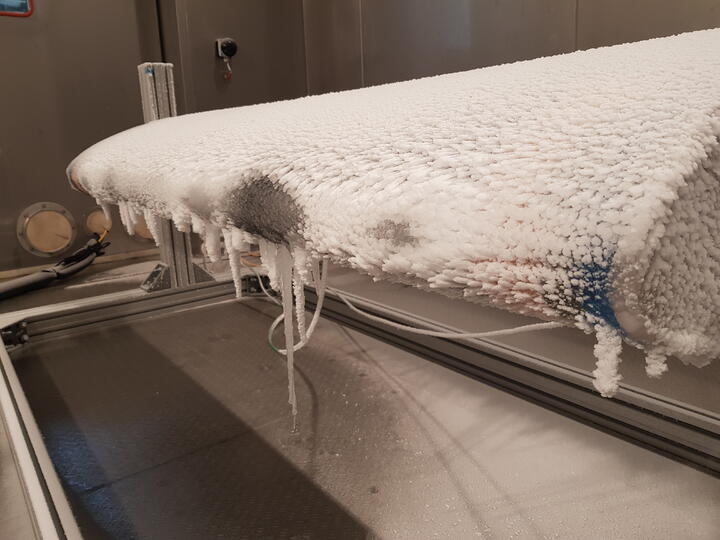MASTRO: Developing a thermoelectric anti-icing component for aerospace
During take-off and landing, an aircraft can experience ‘icing conditions’ as it passes through clouds at below freezing temperatures. This environment can cause a build up of ice on the surface of an aircraft, which can be a detriment particularly to the aircraft’s aerodynamics. If only a few millimetres of ice build up on the surface of the wing, the boundary layer of air can be disturbed and lead to a significant loss of lift, with potentially fatal consequences.
Current anti-icing systems bleed off hot air from the turbine engine and run this hot air through the wing in order to heat it up. This method works well but makes the engine less efficient.
Electrical anti-icing systems based on metallic heater mats are sometimes used to increase efficiency of the engines, however they will soon be a requirement as aircrafts of the future will be electric without the option to use bleed air systems. This work concentrates on development of a thermoelectric anti-icing system, without the weight of metallic heater elements currently used.
Through MASTRO, a three-year Horizon 2020 project, the University of Sheffield Advanced Manufacturing Research Centre (AMRC) has developed multifunctionalcomposites with three different functionalities to move to electrification and reduction in carbon emissions. Working with MASTRO project partner Embraer, these smart functionalities – self-curing, self-sensing and self-anti-icing– have been implemented in an aerospace demonstrator.

